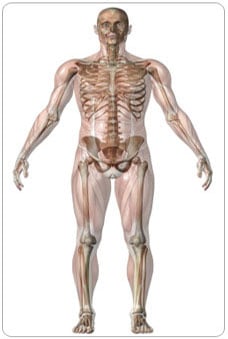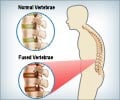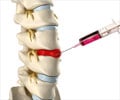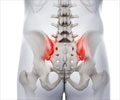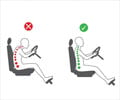Prevention of Back Pain
Daily exercises and taking minor precautions while performing certain tasks may help you prevent your back problems from occurrence or recurrence.
Back is an integral part of all our body movements and is susceptible to strain or injury due to its configuration. Despite being aware that poor posture is bad for our back, we tend to ignore it. This aggravates any problems of the back. Here are some important preventive methods that can be practiced in our daily activities.
- Lifting – With your feet an inch apart, bend your hips and knees to an angle of 30 to 45 degrees, keeping back straight and then lift the object. Hold the object close to your body, and avoid twisting your trunk.
- Posture – Stand tall with your chest facing upright, shoulders relaxed, chin tucked in and back relaxed but upright.
- Sitting – Don’t sit in a same position for long period; stretch your back or walk around in between. While getting up from the chair, always lean forward and put your body weight on the arms of the chair through your palms and push yourself up. Use a cushioned back support in your chair if having a history of back ache.
- Driving – Position your car seat such that your back is supported and legs relaxed Keep a cushioned lower back support or use a acupressure seat-mat covering so as to stimulate the pressure points of your back.
- Sleeping – Sleep on a firm mattress
- Bed Rest – Lie straight on your back and when resting on the side. Use a pillow or support underneath your lower limb which is above and folded in front of the other limb.
- Back Brace - A back support belt is recommended in case of acute attack. It provides support to back muscles. But it is recommended to wear the belt only during the time of actively performing daily activities that too for not more than a week.
- Bad Posture – Avoid slouched shoulders, head down and knees locked while sitting.
- Ignoring the Pain – Start becoming aware about your body and the minimal discomfort experienced in any part of the body is an alarming signal for you to take an appropriate action.
- Minimize Stress at the Desk - Don't lean over the desk for prolonged periods of time or sit too far from the work table. Also avoid sitting on work table with back unsupported. The height of the chair should be in proportion to the table so much so that your elbows makes an angle of 90 degrees with the table
- Avoid sleeping in prone position for very long duration.
- Avoid wearing very high heels. Appropriate height of shoe heels should be range from“1cm to 3cms”.


